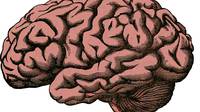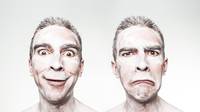
What is perception?
Perception is the process by which we organized and interpret the patterns of stimuli in our environment. Perception acts to draw the sensory data together into a wholistic pattern. Vision and audition provide the most of our perceptual experiences. The perception of objects and events takes place within a framework of space and time. Vision gives us patterns y.of form and color, sense of time, movement and change. Audition makes us aware of sounds, a time sense, succession, change, and rhythm.
What are the object constancies?
We think of objects as remaining where you saw them. We perceive a familiar object as permanent and stable regardless of light conditions, the position from which we see it, or at a distance from us.
The tendency to see a familiar object as having normal brightness and color regardless of the light conditions is called brightness constancy and colorconstancy. The tendency to see and object as unchanging regardless of the viewing angles is called shape constancy. The tendency to see an object as the same size regardless of distance is called size constancy. The fact that an object appears to retain its "same" position, evenas we move about, is known as location constancy. The word, constancy is used to describe stable perception of objects.
What principles of perception help to explain how objects and events are organized?
1. Figure and Ground
Geometrical patterns are always perceived as figures against a background and thus appear to be like objects, which countours and bounderies. Patterns do not have to contain identifiable objects to be structured as figure and ground. Patterns of black and white and many wallpaper designs are perceived as figure-ground relationships. The part in front of the background.
2. Perceptual Grouping and Patterning
Simple patterns of lines and dots fall into ordered relationships when we look at them. The tendency to structure what we see is compelling. What we see in figures seems to be forced on us by the patterns of stimulation. The properties of wholes in Gestalt psychology affects the ways in which parts are perceived.
3. Visual illusions
"To see is to believe", but at times this is not so. This is because perceptions do fail at times. In the study of perception, psychologists have turned to illusions, in which perceptions are misleading. Illusions are based on:
a) relative size in contrast with surroundings
b) intersecting lines
c) ponzo illusion (vertical lines on coverging at a distance), and
d) problems of seeing 3-dimensional forms on a 2-dimensional surface.
Explain hypothesis testing.
A reversible figure like the Necker cube indicates that our perceptions are not static mirroring of visual stimuli. Perceiving can be thought of as a search for the best interpretation of sensory information. The pattern of the Necker cube contains no clue as which of two alternative hypothesis is correct. The perceptual system tests one and then other and never settles on an answer. The problem arises because the Necker cube is a 3-dimensional object represented on a 2-dimensional surface. The perceptual system of hypothesis testing does not sense inputs. It searches for the percept that is most consistent with the sensory data.
The hypothesis tested and the percepts formed depend not only on the features of the object but also on the context within which the object is viewed. Past experience also influences one's perceptual hypothesis. This perception is also called analysis by synthesis.
How is motion perceived?
According to Gibson (1968), the cues for perception are present in the environment. We see an object in motion because as it moves, it successfully covers and uncovers portions of the immobile background. We see objects in motion as changing in space; we see new portions while other portions disappear from view. Whether we track the moving object or look at the background will produce a sensation of object movement.
What are some examples of apparent motion?
To receive motion without a pattern of stimulation is called apparent motion. Some examples are:
1. Autokinetic effect - is apparent movement of stationary light.
2. Stroboscopic motion - is illusion of motion created when separated stimuli, not in motion are presented in succession. This is the basis for films.
a) Phi-phenomenon - is a simple form of stroboscopic motion.
Example: An arrangement of 4 lights which can be turned on and off in any order, wherein one light blinks on and off, followed shortly by another, shows an illusion of a single light moving from the position of the first to the position of the second. When all 4 lights flash on an off in rapid sequence, it appears that a single light is travelling in a circle but the perceived size of the circle is smaller than would be the case if the lights were actually rotating.
What is real motion?
The perception of real motion depends on relations between objects within the visual field and the interpretation we place on these relationships. Whenever there is movement, the perceptual system must decide what is moving and what is stationary with respect to some frame or reference. Example: In a clear sky, the moon appears to be stationary. When framed by the moving clouds the moon will appear to race across the sky, while the clouds appear stationary.
Describe depth perception.
This is perception which considers distance and depth. People with vision in two eyes, have advantages over those with vision in one eye because their total field is larger. They have the benefit of stereosopic vision wherein the two eyes cooperate to experience depth and distance.
Artists perceive depth monocularly with a number of cues: superposition of objects, relative size, height in the horizontal plane, and gradients of texture.
Is our ability to perceive the spatial aspects of the environment learned or innate?
Both learning and innate factors contribute to our abilities to perceive aspects of our environment. Perception of figure-ground relationships, color, and depth, appears to be largely innate. Infants exhibit depth perception. Form perception is mastered through experience.
How is selectivity in perception illustrated?
Perception is selective. At any moment in time we attend to only part of the influx of sensory stimulation. Stimuli may be registered temporarily in the various system but they are selected for attention unless deemed partinent. Factors that favor attention to one stimulus in preference to another reside in its physical properties are intensity, size, contrast, and movement; the individual's needs and expectancies as well as the momentary needs of the individual.
What are the various forms of extrasensory perceptions (ESP)?
1. Telepathy - is thought transference from person to another
2. Clairvoyance - is the perception of objects not influencing the senses. Example: Stating the number and suit of a playing card is in a sealed envelop)
3. Precognition - is the perception of a future event.
What is psychokinesis (PK)?
Psychokinesis is a mental manipulation of objects without touching them. Example: "Willing" that a particular number come up in the throw of dice.
What are the issues is evaluationg ESP?
1. General skepticism about extraordinary phenomena
2. Failure of improved methods to increase the yield.
3. Lack of consistency in the phenomena.


















